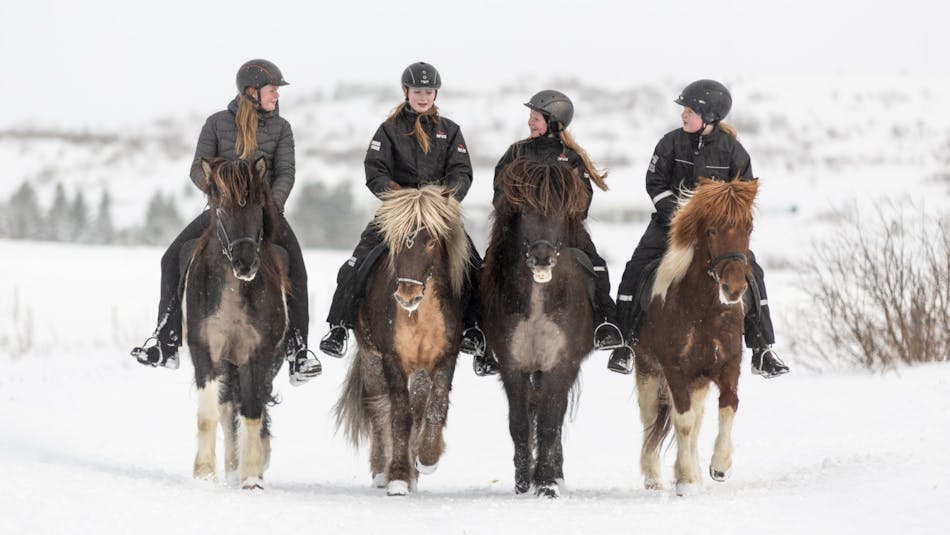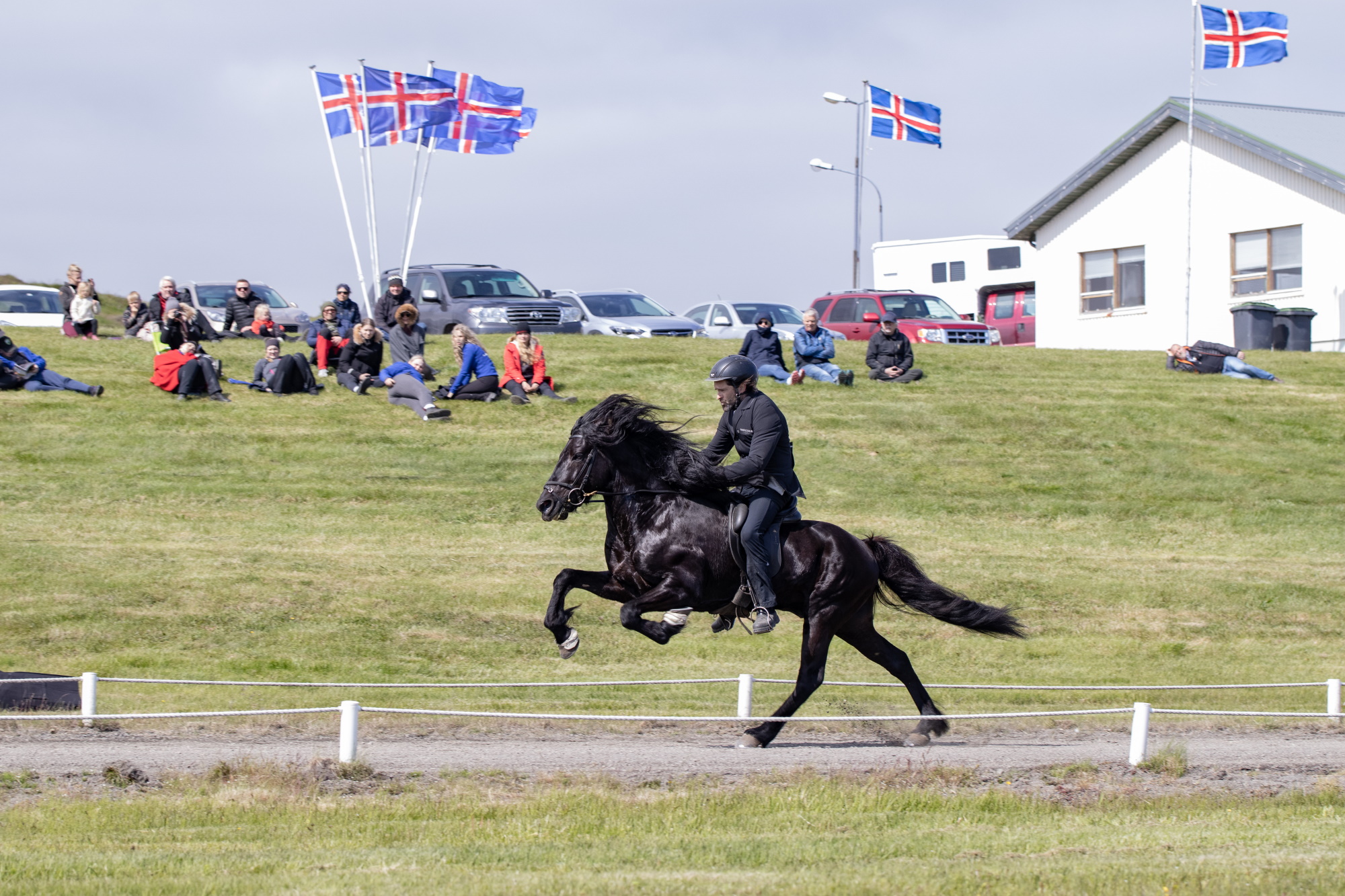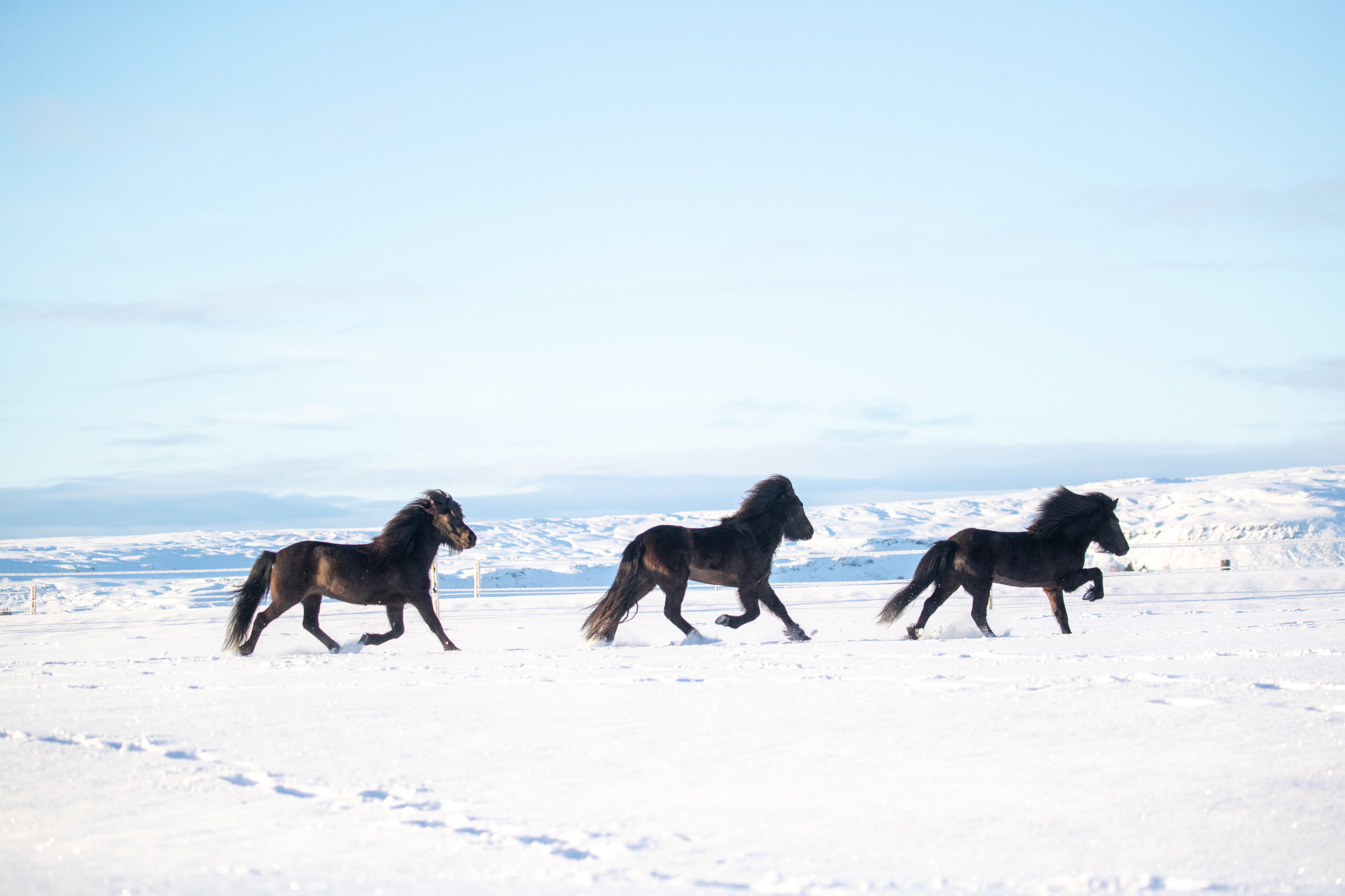
Photo: Louisa Hackl
ABOUT FEELING AND TECHNIQUE
Icelandic horses are often said to be very easy to ride. The truth is that due to their gentle and sweet nature, as well as their smooth gaits, it's very easy to “get a lift” on an Icelandic horse.
HOURS IN THE SADDLE
Most people feel quite comfortable sitting on these rather small mounts, and it almost feels like they are gliding forward when doing their very supple and smooth 4-beat gait, tölt. While tölting on short rides on reliable, gentle horses, there is no bumping around. Most of the other gaits are rather soft, too, and not so much can go wrong. However, for extensive riding on Icelandic horses and especially when training them, the rider requires a fair amount of feeling and technique, which can only be acquired by practicing for many hours in the saddle, preferably under the guidance of a qualified instructor.

Straight balanced seat is the aim with light cues and steady, light hands often with very light rein contact
STRAIGHT BALANCED SEAT IS THE GOAL
Any experience with other horse breeds is, of course, very valuable and useful when riding Icelandic horses. - A horse is a horse, after all. But because the horses of Iceland have the extra gaits, tölt and flying pace, there are some fundamental differences in cues and aids compared to riding a “regular” riding horse. In the training of Icelandic horses, most modern riders use quite a lot of dressage techniques, in order to improve the balance and quality of the gaits, straightness and overall agility of the horse, as well as the ability to carry the rider in the most efficient way. Icelandic horse competitions mainly focus on showing the quality of the five gaits, along with some races in pace. Some Icelandic horses are talented in show jumping but such competitions are not very common.
In short, the main riding technique consists of a straight, balanced seat, light cues and steady, light hands often with very light rein contact. The voice is commonly used along with seat, leg and rein aids. Icelandic horses are supposed to keep moving until told otherwise, to keep the tempo and beat until otherwise suggested. Most riders prefer the horse to keep offering more energy and forwardness, rather than the rider having to ask for more all the time.

The initial training
Icelandic horses are usually started no earlier than 3-5 years old. Until then they often have little contact to humans, although it is becoming more common to carry out pre-training for a few days earlier on to make the training easier for everyone later. Traditionally, a young horse would go out as a hand-horse with another older riding horse, for quite some time before being ridden. Today still, hand-horse riding (or ponying) is popular and considered an important part of the initial training.
Do you want to enjoy the Icelandic horse? Click here